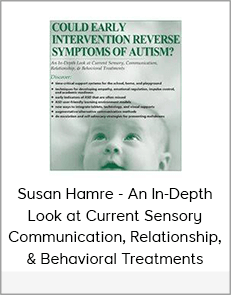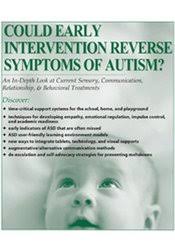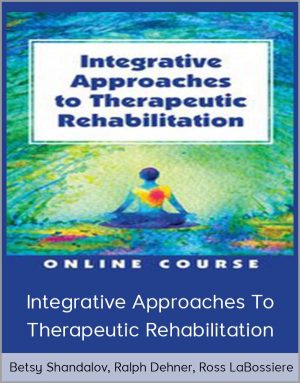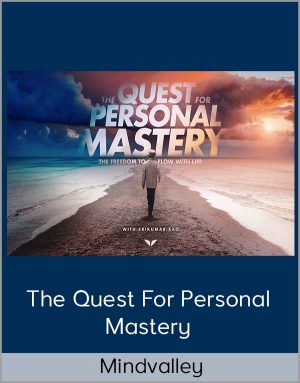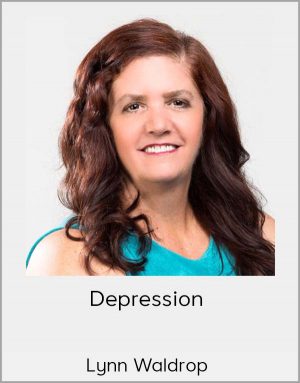Susan Hamre – An In-Depth Look at Current Sensory, Communication, Relationship, & Behavioral Treatments
$60.00$219.99 (-73%)
The development of empathy, emotional regulation and impulsive control
Susan Hamre – An In-Depth Look at Current Sensory, Communication, Relationship, & Behavioral Treatments
Check it out: Susan Hamre – An In-Depth Look at Current Sensory, Communication, Relationship, & Behavioral Treatments
Time is not your friend when working with children on the autism spectrum. Recent studies suggest that the impact of early intervention can significantly improve outcomes, lead to fewer delays in communication and development, and possibly even eliminate symptoms – but time is critical.
This entry is intended to help participants identify early ASD scores that are often overlooked and create time critical support systems to enhance academic preparedness, empathy, emotional regulation, and impulsive control over the most formative years.
Interactive laboratories, videos, and case studies embody an effective multimodal approach, as Susan Hamre, director of the Center for Autism Training in Chicago, demonstrates the real-world applications and results of today’s most effective early intervention strategies.
OVERVIEW
Updated definition / refinement of ASD in accordance with DSM-5®
Early Intervention and ASD Biomarkers
Recent studies of possible causes of ASD
Impact on families
Case studies
Staying alone in the middle of a storm
Distinction between crisis and hysteria
Behavioral Functions
Differential decay control against hysteria
Understanding the Storm Path
Define preliminary fusion cursors
Noting triggers from sensory system or communication problems
Soothing strategies
Repair Period – Post-Escalation
I manage YOU!
Case studies
POWER OF TOUCH INTEGRATION
Sensory Systems Disrupted
Neurological input processing
Search / avoid sensory stimuli
Touch Control Strategies
Sensory breaks
Sensory diet
Support examples
Case studies
WHERE IS MY VOICE? – COMMUNICATION
Communication problems
apraxia
Hearing treatment
Literal translations – black and white interpretations
Spontaneous (social) language
Augmentative / alternative communication and cognitive development strategies
Image Communication System (PECS)
AAC (iPad, apps, etc.)
Gesticulatory / ASL
Scenarios
Board selection
Straight Talk
Case studies
ASPECTS OF SOCIAL AND EMOTIONAL DEVELOPMENT
The relationship of socio-emotional development with knowledge
5 features of socio-emotional development
The development of empathy, emotional regulation and impulsive control
What happens when these skills are delayed or absent?
How to help?
Interacting at their level
Video modeling
Rules / Expectations
Social stories
Photos / Sequences
Self-interest
Case studies
DO NOT UNDERSTAND THE ENVIRONMENTAL INFLUENCE
Problems (video)
Light – “too busy” / overly stimulating / distracting / too bright / “can’t see”
Sounds – noise in the hallway / children’s voices / buzzing from technology / buzzing lights / scratching pencils
Olfactory sensitivity
Topical research
Kinesthetic – too crowded / children touch / stumble on the line / too hot or cold
supports
Space organization
Lighting adjustment
Temperature control
What to avoid
CURRENT INTERVENTIONS
Early intervention
Strategies for treating infants and toddlers
Case studies
Relationship Intervention
Communication interventions
Behavioral interventions
Alternative interventions
VISUAL SUPPORT – NOT ONLY ANOTHER PUNCH
Who needs them?
The benefits of using visual supports
Visual Support Examples
Case studies
DO NOT FORGET MOTIVATION!
Inclusion of interests / hobbies versus resistance to them
Building a bridge against hanging carrots
Internal and external motivation
Don’t let motivation drive, but rather guide
More information about medicine:
Medicine is the science and practice of establishing a diagnosis, prognosis, treatment and prevention of diseases.
Medicine includes various methods of medical care designed to maintain and restore health through the prevention and treatment of diseases.
Modern medicine uses biomedical sciences, biomedical research, genetics and medical technologies to diagnose, treat and prevent injuries and diseases,
usually with pharmaceuticals or surgery, but also with various treatments, such as psychotherapy, external tires and traction, medical devices, biologicals and ionizing radiation.
Medicine has existed for thousands of years, during most of which it was art (a field of skills and knowledge), often having connections with religious and
philosophical beliefs of local culture. For example, a medic used herbs and prayed for healing, or the ancient philosopher and doctor used bloodletting in accordance with theories of humor.
In recent centuries, since the advent of modern science, most of the medicine has become a combination of art and science (both fundamental and applied) under the auspices




